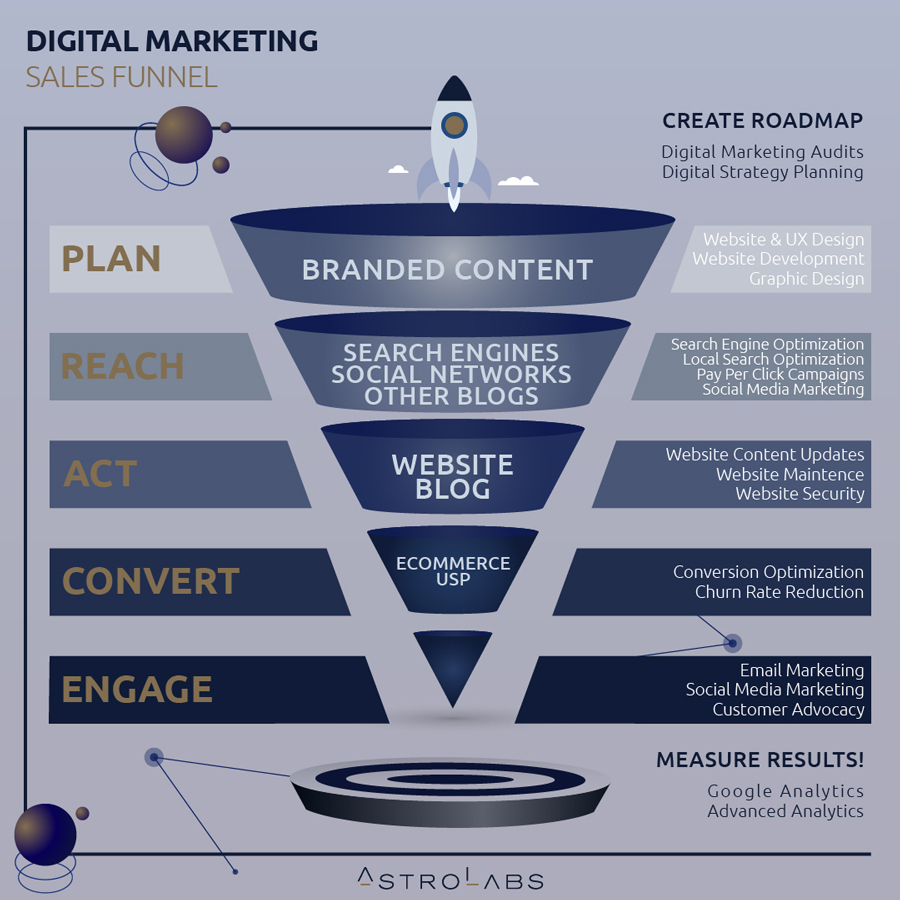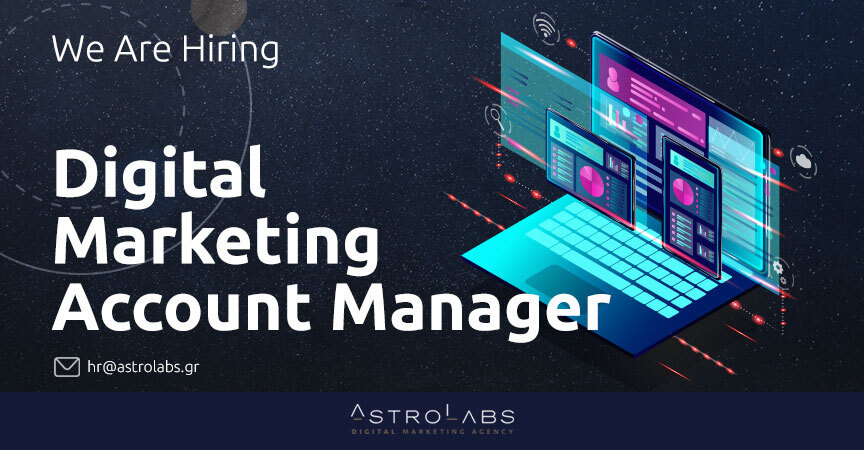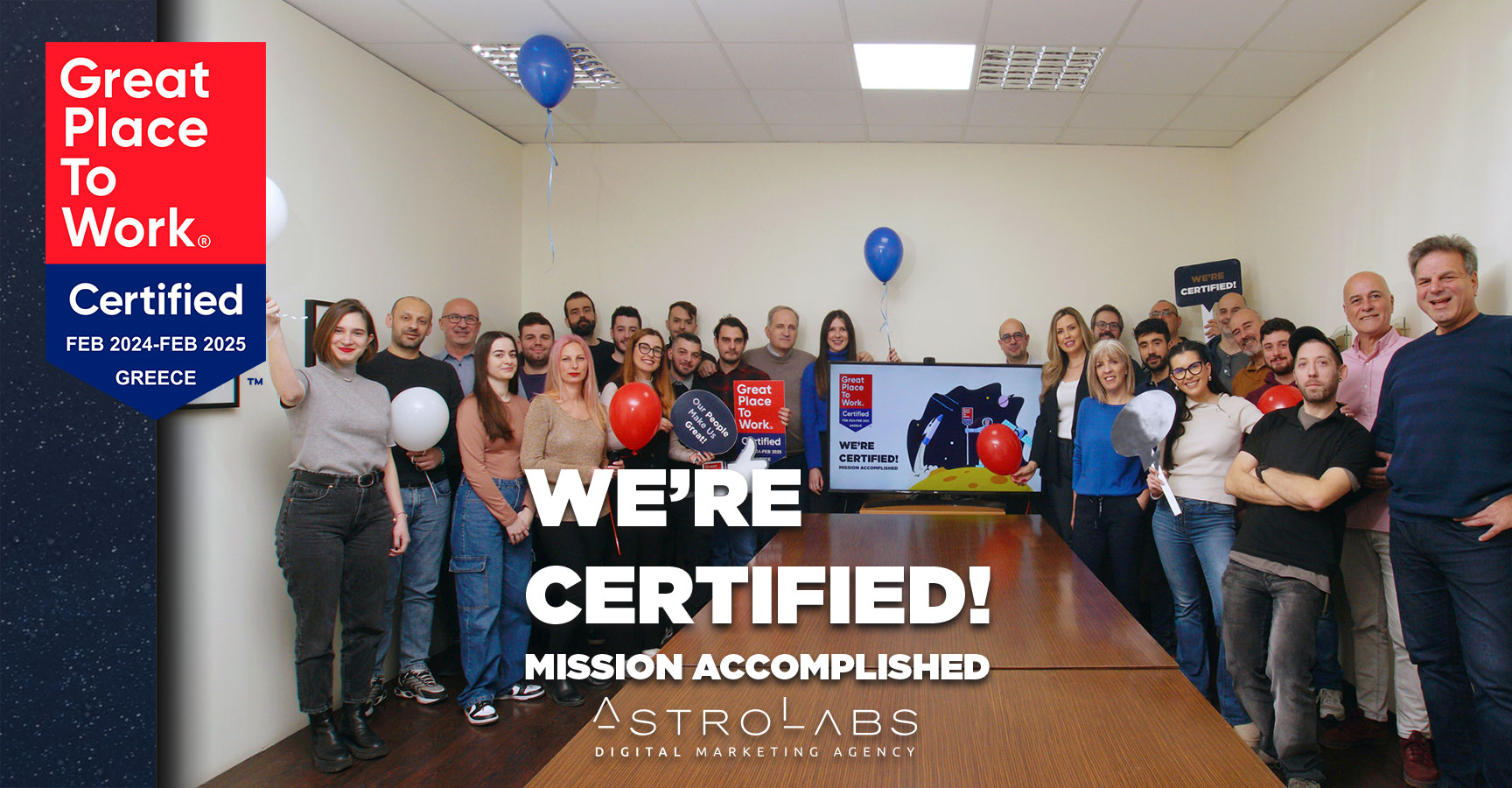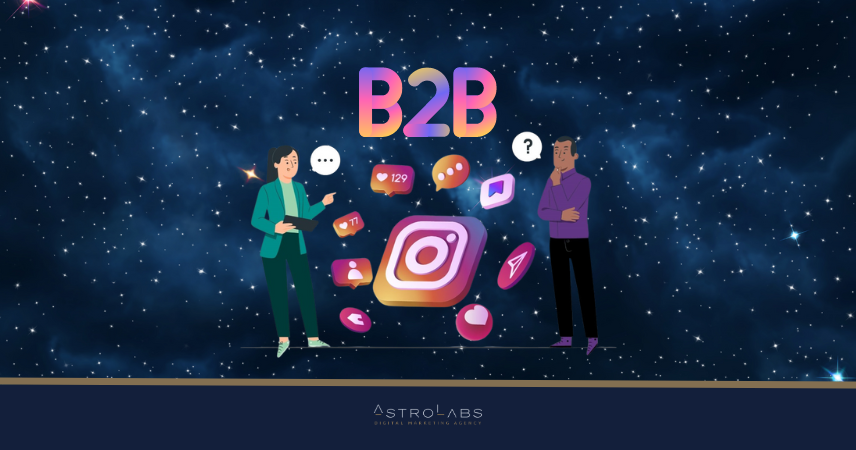The world of digital marketing is full of buzzwords, designed more to impress than to channel the necessary, concentrated knowledge to the uninitiated in the ever-expanding digital landscape.
Digital Marketing Funnel is definitely not one of those buzzwords. On the contrary, it is perhaps the most important strategy guide that helps us navigate the -usually- uncharted waters of the digital world on a daily basis.
For those who don’t already know, a digital marketing funnel is a record of the steps a prospect (prospective customer) is asked to take from not knowing your brand to becoming a customer. Essentially, a digital marketing funnel maps the journey the audience takes until the sale is completed. Each stage of the funnel has specific goals that are addressed with different tactics. As you can see, we go through marketing funnels every day without being immediately aware of it.
There is some bad news and some good news. The bad news is that there is no “One Funnel To Rule Them All”. There are no shortcuts and the path is almost never linear. It’s a constant dialogue, a back and forth movement of the pendulum. The good news is that it may sound difficult, but by following just 3 basic rules, you can design a digital marketing funnel that fits your goals:
– Start simple
– Try
– Optimize
With that in mind, let’s look at the journey someone goes through when they enter the Astro-Funnel, our Digital Marketing Sales Funnel!

Stage 1 – PLAN:
Your online content is your brand identity. It should reflect the values, mission and what the company offers to the prospective customer. Your website is the image you want to project to the world and we are here to design and develop it for you.
Stage 2 – REACH:
Your website is ready, the pieces are in place, but people need to be able to discover you and you need to be able to communicate with your potential customer base. Search engine searches and social media profiles are just some of the avenues that can lead to your website, but the website itself should be as easily “visible” to search engines as possible. Through Search Engine Optimization and Local Search Optimization techniques, the right keywords entered in Google searches will drive the audience to the company and through Pay Per Click campaigns, the right ads will reach the right people at all times.
Stage 3 – ACT:
Maintenance and consistency are key factors that determine the success of a brand’s online presence. Your website should always be up-to-date in terms of content and technical capabilities. Also, a blog with news related to the brand and the company’s industry can always help. Finally, it goes without saying that your website should always be safe from online attacks, with every byte of data stored being impervious to any breach. Your client is trusting you with very personal information and should always feel secure about that decision.
Stage 4 – CONVERT:
How many of those who end up on your site make a purchase? Was there anything that discouraged them along the way? How do we get them back? Did they return to your website to complete a purchase after seeing a product again through remarketing? Were they satisfied enough to sign up for your newsletter? Did they unsubscribe some time later? These are just a few of the questions we answer every day to achieve a positive and satisfactory visitor-to-customer conversion rate.
Stage 5 – ENGAGE:
The customer has completed their purchase and has left the website, but our mission didn’t end there. We now need to start an ongoing dialogue with this new customer and make them feel part of our brand community. Post-purchase feedback is critical, as each customer can also influence their own cycles positively or negatively. Through Email and Social Media Marketing we ensure that the conversation continues to not only interest the audience but also make them want to engage with the content we provide.
Well, that’s it, isn’t it? Are we done?
Of course not!
As we said above, constant testing and optimization are the key components of a successful digital marketing funnel, and luckily we have all the tools to ensure that every phase of it runs smoothly and in sync with our clients’ needs. There are certain metrics that we should always take into account, analyze and decide whether it’s in our best interest to move to the next stage of our digital strategy or take a step back, reassess and move forward more efficiently than before!



